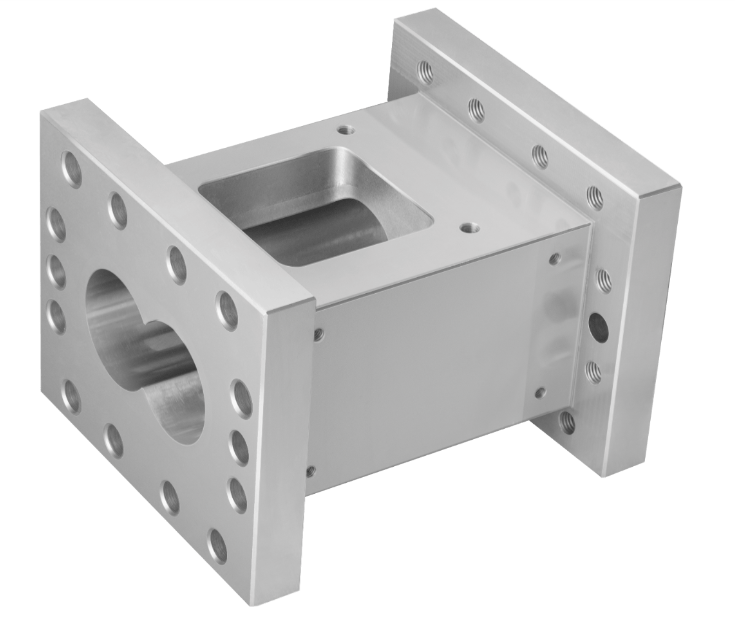Author: Site Editor Publish Time: 2024-02-06 Origin: Site





The design of the twin-screw extruder provides an advantage over other plastic processes. Full flexibility gives the process engineer the ability to configure the extruder to optimize the process and produce the best properties attainable. Most engineers recognize the benefits of being able to configure screws,while do not consider reconfiguring the barrel of an extruder as a practical option.
Viewing the twin-screw extruder as a series of unit operations, the process engineer has the opportunity to address:
• Solids conveying;
• Melting of polymers;
• Customizable mixing of additives into the melt;
• Liquid injection;
• Downstream addition of additives;
• Venting (atmospheric and vacuum);
• Pumping;
• Heat Transfer;
• Chemical reaction, in the case of reactive extrusion.
Here, we will discuss the configuration of the barrel and how each barrel section can be used for various operations.We will look at each of these barrel types in general and in more depth as we pair each barrel section with the appropriate screw configuration for te unit operation specific to that section of the extruder.

An open barrel is a barrel that has an opening to allow for feeding or venting of volatiles. The same open barrel design can be used for both feeding and venting and can be placed at any location along the overall barrel.
1.Feeding
Obviously, material must be introduced into the extruder to start the process. The feed barrel is an open barrel section designed such that an opening exists at the top of the barrel through which material is fed.
The most common location for the feed barrel is in the Barrel 1 position — i.e., the first barrel in the process section. Pellets and free-flowing granules are metered with a feeder so that they drop into the extruder through the feed barrel directly on to the screws.

Powders with a low bulk density often present a challenge in that air is typically entrained with the falling powder. The escaping air blocks the flow of the light powder, reducing the ability of the powder to feed at the desired rate.
One option for feeding powders is to have two open barrel sections in the first two barrel positions of the extruder. In this setup, powders are fed to Barrel 2, allowing the entrained air to vent out of Barrel 1. This configuration is a known as a back-vent arrangement. The back vent provides a pathway for the air to exit the extruder without backing up the feed chute. As the air is removed, the powder can feed more efficiently.
2.Side Feeding
Once the polymer and additives are fed to the extruder, these solids are conveyed to the melting zone where the polymer is melted and mixed with the additives. Additives can also be fed downstream of the melting zone using a side feeder.
The barrel section used for this operation is called a side-feed barrel. In addition to the figure 8 for the extruder screws, a second figure 8 opening in the side of the barrel allows the side stuffer to be connected directly to the extruder so that the additives are stuffed into the molten polymer. A standard open barrel is typically positioned just upstream of the side feeder as a vent to allow any entrained air to escape.
A more compact version of the side-feed barrel with an open vent is known as a back-vent combi-barrel . This has both a figure 8 to match a twin-screw feeder and a small vent opening on the top of the barrel section towards the upstream end of the barrel section for air to escape

3.Venting
The open barrel section can also be used for venting. volatile vapors that are generated during compounding must be vented before the polymer is forced through the die.
The most obvious location for a vent is toward the discharge end of the extruder. This vent is often connected to a vacuum pump to ensure all volatiles entrained in the polymer melt are removed prior to discharge through the die. Vapors or gasses remaining in the melt will result in poor pellet quality, including foaming and reduced bulk density, which may affect how well the pellets can be packaged.
Additional vents, both atmospheric and vacuum, can be added along the length of the extruder if high levels of volatiles are present, if a diluent is being injected to remove an undesired volatile, or if a large amount of liquid/vapor byproduct is being generated as the result of a reaction.
The proper venting (or devolatilization) should allow air and/or volatiles to escape from the barrels while preventing the material from being lost. A variety of vent-port designs, including vent stuffers, elongated vent barrels, and side vents, have been developed for corotating twin screw extruders to accommodate a wide range of applications and materials.
(remark:content is recited from plastic technology online and website)
Next Article, we will take a look at the closed type barrel and how to assemble the extruder barrels. we would like to discuss about the extrusion technology with people all over the world.Contact us now! jieya@njjieya.com